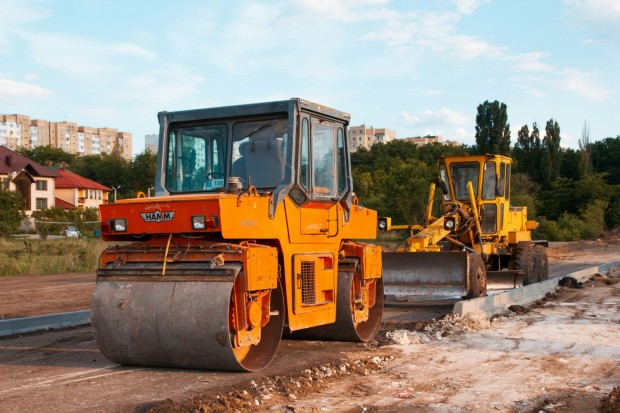Traditionally, construction machinery, particularly heavy equipment like excavators, has been predominantly colored yellow. However, there is now a noticeable shift in the construction sector towards breaking this norm and embracing alternative colors for their equipment.

(Photo : Unsplash/Maria Lupan )
The Reason Why Building Materials are Painted Yellow
The color yellow is primarily cultural in nature for commercial building tools. Although this hue is frequently linked to the construction industry, its extreme brightness is mainly driven by the need for construction equipment to be visible to workers on the job site. As mentioned, the optical structures responsible for color perception, namely the red and green cones, are activated to perceive the color yellow. Stimulating two types of cones rather than one stimulates yellow, considered the most brilliant color throughout the day and night.
Moreover, compared to other hues, yellow is processed mentally more rapidly, enabling the brain to discern objects painted in yellow within milliseconds. A microsecond-sized gap is reportedly sufficient to prevent an accident. In terms of scientific research, yellow construction equipment is the most secure alternative that is now accessible.
On the other hand, in 1931, following Caterpillar's transition from Battleship Gray to Hi-Way Yellow, other corporations did the same. In addition, the case manufactured its first yellow tractor, which had a loader and a backhoe combination, in 1957, while Volvo developed its yellow backhoe/excavator loader only slightly later, in 1965. Yellow was also used for the construction equipment that John Deere manufactured.
Thus, in 1979, Caterpillar adjusted its paint mix and changed to the highly distinctive Caterpillar Yellow we are familiar with today. Because of this, yellow construction equipment eventually became the standard operating procedure. Accordingly, Volvo, Case, and John Deere may have chosen yellow to capitalize on Caterpillar's success, but based on scientific research, yellow is the most effective hue for tools and machinery used in construction.
Also Read: Georgia Tech's New Athletic Performance Center Embraces Sustainable Construction
Construction Sector is Now Starting To Use Different Color
A rainbow of worldwide brands is undermining the ubiquitous yellow equipment on construction sites. This is because a growing number of producers of construction equipment are attempting to differentiate themselves in a market that is becoming increasingly competitive.
Yanmar, a Japanese company widely regarded as the grandmother of compact construction equipment, announced in 2020 that its 4-ton SV40 ultra-tight tailspin mini excavator and all following machines would be available in a new color called premium red. This was in contrast to the standard yellow color that Yanmar had been using for its compact building machinery for over fifty years.
In 1968, the firm manufactured its first yellow mini excavator. Nevertheless, the company is hopeful that its rebranding, unveiled at Intermat, will help it achieve its goal of being the global leader in compact construction equipment. According to Dennis Kottman, the head of online marketing at the German auction house Surplex, approximately 70% of the utilized equipment the firm sells each year is yellow, and 95% of the yellow equipment the company sells has retained its original green color.
When it comes to purchasing old construction machines, color does play a significant role. One of the most critical considerations to consider when selecting an excavator to buy over another is the manufacturer. Significantly, the yellow companies are producers that enjoy widespread renown and recognition.
As per the prospective purchasers, this color is connected with a demonstrated level of performance and longevity. There is also a guarantee that spare parts will be readily available. Therefore, even while color might not be the most crucial factor in determining whether or not to buy a machine, it can play a particular part and help to boost confidence in the device.
Related Article: 6 Common Hazards in the Excavation Process







